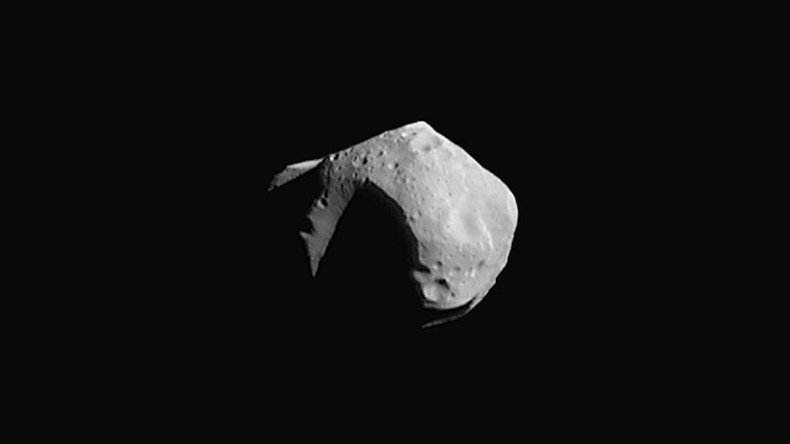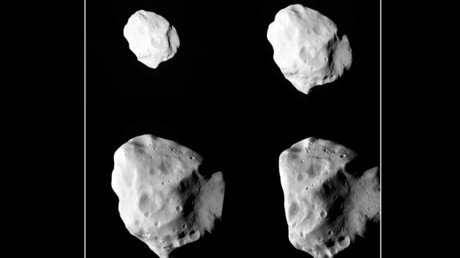NASA’s ‘Intruder Alert’ system spots asteroid on near-collision course with Earth

A large chunk of space rock is coming dangerously close to the vicinity of the Earth, but scientists are sure it won’t collide with our planet, thanks to a new NASA tool designed to detect potentially hazardous space fly-bys.
The incoming rock was detected by the NASA-funded Panoramic Survey Telescope & Rapid Response System (Pan-STARRS) on Maui, Hawaii, on October 26. A new early-warning system, named Scout, promptly analyzed the data on the rock and concluded that the object went in the direction of Earth, but would miss it by about 500,000km (310,000 miles).
“The NASA surveys are finding something like at least five asteroids every night,” NASA Jet Propulsion Lab astronomer Paul Chodas said.
Scout is a computer program currently undergoing tests in JPL in Pasadena, California. It is constantly scanning data from telescopes worldwide, in search for so-called Near Earth Objects (NEO).
NEOs are space objects, such as rocks and comets passing by Earth. Most of them are relatively small and harmless, but those of 150 meters in diameter and bigger can potentially pose some risks to the mankind. Scout mainly deals with ‘small’ objects which are very close to the Earth.
“Objects can come close to the Earth shortly after discovery, sometimes one day, two days, even hours in some cases,” says JPL Davide Farnocchia. “The main goal of Scout is to speed up the confirmation process.”
Another system called Sentry is already online and complements Scout. Sentry’s goal is to identify the NEOs large enough to wipe out a big city, which might hit Earth in the next hundred years.
“I believe in the next 10 to 15 years we'll actually be at the point where we as humans can say, ‘Hey, we're safe from this danger of large asteroids hitting the Earth,’” said an astronomer Ed Lu, CEO of B612, an organization devoted to battling asteroid threats.
The future plans include redirection of the potentially dangerous asteroids by deliberately impacting them. The Joint European/US Asteroid impact and Deflection Assessment mission (AIDA) is preparing to intercept the asteroid Didymos in 2022, when it is about 6.5 million miles (11 million km) from Earth.
Didymos is a binary system, in which an 800-meter-wide asteroid and a smaller 150-meter space rock orbit each other. Didymos poses no direct threat to our planet, but the scientists plan to strike its moonlet, informally known as ‘Didymoon’ with an impactor, to change its orbit and determine whether it’s a feasible way to deal with incoming asteroids.
More distant NASA plans, known as the Asteroid Initiative, include placing an asteroid into orbit of our moon, basically to provide it with a moon of its own. It’ll ensure the asteroid won’t hit the Earth, and besides that, the scientists will be able to sample the captured rock more ‘easily.’ The mission was originally planned for 2017, but it has been constantly postponed and is now scheduled for 2021. A manned expedition to the asteroid is unlikely to happen before 2026.













